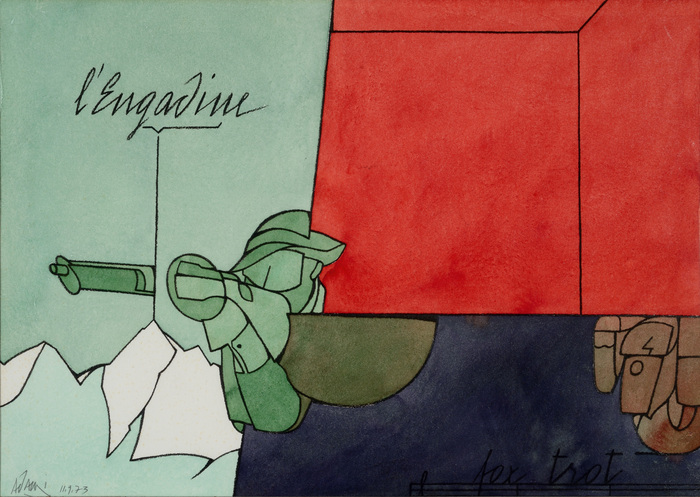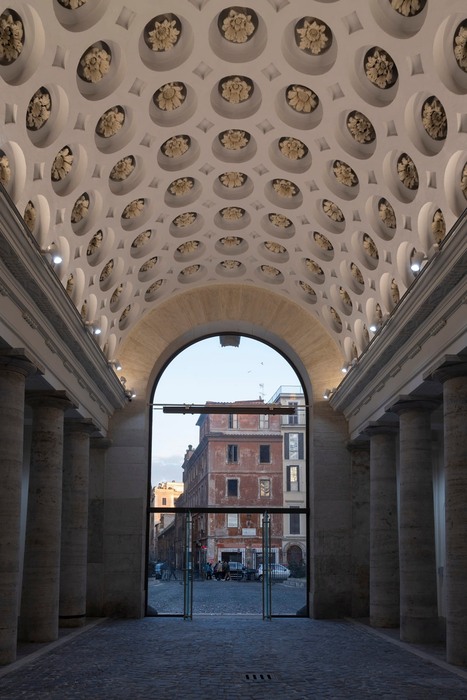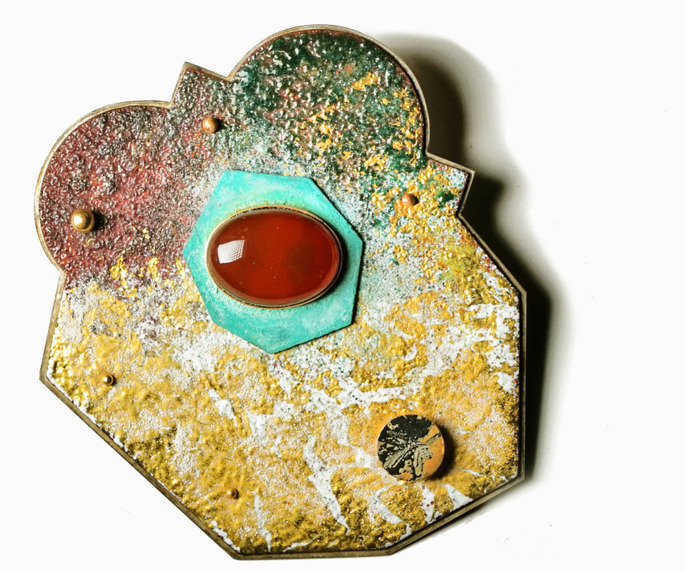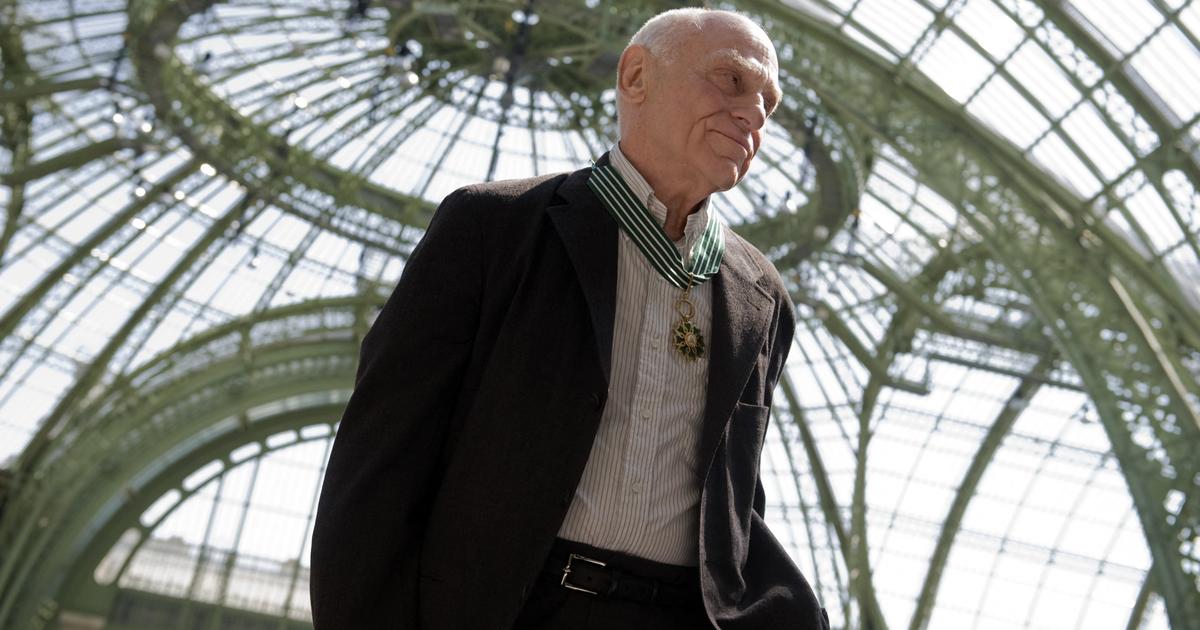Two men scrutinize what appears to be a blank box.
It's on a large table next to an industrial-looking printer.
It is striking to see them so focused on a clean canvas, but the truth is that they are not.
Seen up close, there are marks on its surface, many raised areas and what appear to be traces of brush strokes.
As if it were a painting that had been stripped of paint.
It is exactly that:
The water carrier of Seville,
by Velázquez, but without color.
That is to say, a reproduction of its support as it is preserved today in the Apsley House in London.
The printer starts up and begins to stamp the colors imagined by Velázquez four centuries ago and little by little, in less than half an hour, we see an exact copy of
The water carrier of Seville:
not only of the painting, but of the entire painting, with all the signs and scars of time that make it a unique object.
This happened two weeks ago in the warehouses that the Factum Arte company has in the San Blas district of Madrid.
A huge 6,000-square-meter workshop where one can come across a half-made sculpture of Anish Kapoor at the entrance and around the corner come across a clone of a tomb from the Valley of the Kings in Egypt.
Artists, engineers and curators work here side by side with a double objective: on the one hand, the materialization of pieces by contemporary artists that they cannot make in their own workshops due to their technical difficulty or their dimensions and, on the other, the digitization and production of exact replicas of capital works in the history of art for their dissemination in exhibitions, their study and their preservation.
This second field of activity is carried out through the Factum Foundation, a twin entity created in 2009 that works in collaboration with institutions around the world for the conservation of international artistic heritage.
The appearance of the buildings perfectly reflects that mixture of artisan work and cutting-edge technology: delicate brushes and traditional punches coexist with industrial milling machines, high-precision scanners and 3D printers.
The men engrossed in the blank box are Adam Lowe, founder and director of Factum, and the engraver Rafa Rachewsky.
And their expectation was logical: it was the first print test that
Velázquez
made of that
velázquez
after the original painting was digitized in London in August.
For this they took one of the jewels of the house, the Lucida 3D scanner, developed in collaboration with the artist Manuel Franquelo (another of the founders of Factum, along with Lowe and Nando Guereta) to collect high-resolution data on paintings and bas-reliefs .
Its precision is such that in the last decade the device has been requested to make copies in the main museums and galleries of the world.
“Many times the paintings are exhibited protected by glass and in light conditions that do not allow us to appreciate all their details and reliefs.
This is a way that they can be shown or studied in detail without damaging them.
And it can also be used to know how a work changes over time if we register and archive it at different times ”, explains Carlos Bayod, the person at Factum who best knows Lucida, its manager and guardian.
This is how the first test of the facsimile of 'El aguaador de Sevilla' was carried out in Factum.LUIS MANUEL RIVAS
The final facsimile of
El aguaador de Sevilla
will be exhibited along with nine other replicas of works by the Sevillian painter in the future museum of the Casa Natal de Velázquez, which is scheduled to open in 2021. A museum made of copies?
“The word
copy
no longer has in art that negative sense of
falsification
or
fraud
that it used to be.
The facsimile is a tool for the dissemination and study of heritage.
The pandemic, on the other hand, has demonstrated the importance of digitizing museum collections.
So the better we do it, the more perfect the copy, the better we serve those goals.
Our goal is for it to be virtually indistinguishable from the original, ”Lowe says.
The art of the future
Since its founding in 2000, Factum has developed many other technology tools specific to the art world.
Milling machines that do the work of traditional large-scale punches and chisels.
3D printers that materialize forms impossible to model with human hands.
Sophisticated photographic printing and engraving systems.
That's why prominent artists from around the world turn to them often.
The list includes names like Anish Kapoor, Mariko Mori, Marina Abramovic, Marc Quinn, Paula Crown, Rachid Koraichi, Antoni Muntadas or Carlos Garaicoa.
“There are those who make us orders already closed, like Anish Kapoor, but others come to us before we have finished conceiving the piece to see all the possibilities they have.
Many times we not only make the pieces, but we work side by side with the artist throughout his creative process to help him shape his ideas, ”says Lowe.
This is the case, for example, of Marina Abramovic.
“She is a
performer,
her work is essentially ephemeral.
But he wanted to try something else: to make a work that combines both, that could be exhibited in a museum and at the same time be
performative,
that somehow was activated in time, "he adds.
View of the work 'Five Stages of Maya Dance', by Marina Abramovic, in a Factum Arte workshop.
/ INMA FLORES
Factum began to collaborate with Abramovic in 2013 and since then he has produced several works with her, always related to his body, also the protagonist of the work he develops as a
performer.
For example,
Five Stages of Maya Dance
, composed of five portraits of the artist in alabaster, which take on very varied shades when illuminated.
They were presented at the Londonese Masterpiece Art Fair in summer 2018 and now the artist continues to work with Factum on a new series that will be exhibited for the first time at the Royal Academy in London in September next year.
Alongside the new Abramovic series, new sculptures by Anish Kapoor are also half finished, the details of which are still a secret.
And future projects for Mariko Mori, with whom Factum has also been working for several years with its most advanced machinery.
They are usually fiberglass sculptures produced from 3D models designed by the Japanese artist and that require the combined use of new technologies and artisan work: the machines act first, but then the intervention of specialists in sculpture and painting is necessary to achieve a perfect finish.
From Brazil to Iraq
But the first thing that catches your eye upon entering Factum's main nave are two colossal statues in the shape of winged lions.
They are two representations of lamassu, protective deities of Assyrian mythology, which used to be placed at the gates of cities and palaces in ancient Mesopotamia.
In the mid-nineteenth century, two of these large, well-preserved sculptures were found in excavations a few kilometers from the present Iraqi city of Mosul, which were sent to London and are now displayed in the British Museum.
Factum scanned them in 2004 and last year, in collaboration with the British Museum and the Spanish Ministry of Defense, donated two exact replicas for installation at the University of Mosul, now standing as a symbol of the artistic heritage repair work destroyed by ISIS in Iraq.
Today the molds of these two lamassu guard the entrance doors of the Factum workshops in Madrid.
It is an example of how the production of facsimiles can contribute to their repair and the study of ancient cultures.
Another example is the replica that Factum is also making of the sacred cave of Kamukuwaká, located in the Brazilian region of Mato Grosso, a legendary place that the indigenous people of the area traditionally used for the initiation rituals of their leaders, decorated with petroglyphs of great value in the culture of those communities.
In 2018, a good part of those engravings were destroyed and now the Factum Foundation, in addition to a reproduction of the cave in its current state, is working to restore the lost petroglyphs in collaboration with anthropologists, photographic documents prior to the attack and testimonies of the own natives.
The final reconstruction will be sent to Brazil for study and dissemination.
Each facsimile is unique and the data obtained from the scans does not belong to Factum, but to the owners of the original work.
Series are never produced, but a single copy for a specific purpose: for an exhibition, to replace a work in its enclave or to disseminate those that cannot be moved.
Pharaoh's tomb
And suddenly we come across the tomb of Pharaoh Seti I. For years Factum has been scanning the burial chambers of the Valley of the Kings of Egypt to make facsimiles that can be used both for research and for display in the original enclave itself, since many of them are closed to avoid degradation.
In 2014, its replica of Tutankhamun's grave was inaugurated in Luxor and now in Madrid work is continuing to reproduce that of Seti I, as well as the rooms where it is located.
It can now be visited virtually thanks to a digital recreation that is available on its website, waiting for the physical rematerialization to finish.
Another recent project is the facsimile of the tomb of Cardinal Tavera, a work from 1552 made by Alonso Berruguete for the Hospital de San Juan Bautista in Toledo, where the original tomb is still located.
It has been registered in its current state, but the objective is also to try to reconstruct the missing parts, adding the result to the copy, so that it can be used in the future for the restoration of the original.
The tomb of Raphael in the Pantheon of Rome, the Lady of Elche, the
Blessed of Liébana
,
the
Burial of Santa Lucia
by Caravaggio,
The Last Supper
by Leonardo da Vinci and
The Wedding at Cana
by Veronese to accompany individual
performances
by Peter Greenaway.
There are still traces of these works that have been analyzed and reproduced in detail in this huge Madrid workshop where craftsmanship and technology intersect to produce the art of the future and revive that of the past.
Credits
Coordination: Brenda Valverde
Art direction: Fernando Hernández
Design: Ana Fernández
Layout: Alejandro Gallardo
Video: Luis Manuel Rivas and Álvaro de la Rúa






/cloudfront-eu-central-1.images.arcpublishing.com/prisa/B4T7XCN2ORDQLGNNVCIV4QQYC4.jpg)








